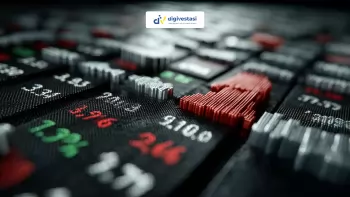
Saham News
Foreign Investors Quietly Buy These 10 Stocks - Check the List!
/index.php
Crypto News - Posted on 14 October 2025 Reading time 5 minutes

Bitcoin trading continues to grow as one of the most popular forms of investment in the cryptocurrency market.
However, amid its fast-paced and highly volatile nature, many traders — both beginners and professionals — still tend to repeat the same mistakes.
These mistakes are not only due to a lack of technical knowledge, but also involve discipline, psychology, and risk management.
Below are the seven most common mistakes traders make when trading Bitcoin — and how to avoid them.
Fear of Missing Out (FOMO) affects not only beginners but also seasoned traders who sometimes get carried away by market euphoria and enter trades without proper analysis.
The problem is that emotionally driven decisions often lead to buying at the top and selling at the bottom.
A data-driven and disciplined approach is far more effective than chasing short-term excitement.
The urge to make quick profits often pushes people to jump into trading without understanding what they’re actually dealing with.
In the fast-moving crypto market, such impulsive behavior can easily lead to avoidable losses.
Before trading Bitcoin, it is crucial to understand the basics — how the network operates, how prices are formed, how to read trends and support/resistance levels, and what factors drive value changes.
No matter the amount of capital, risk is always present, and lack of knowledge often amplifies losses.
Trading without a plan is no different from gambling.
Many traders overlook key elements such as profit targets, stop-loss levels, and exit strategies.
Sound trading requires a structured and measurable framework — knowing when to enter, when to exit, and how much risk you can tolerate.
Without a plan, trades tend to become reactive and emotionally influenced by market sentiment.
Risk management is often underestimated — until a major loss occurs.
Placing too much capital in one trade, trading without stop-loss protection, or using excessive leverage can worsen results.
As a rule of thumb, each position should only take up 1–3% of total capital to keep risks manageable.
Keeping crypto assets on exchanges is convenient but risky for long-term storage.
These platforms are not designed as permanent wallets and remain vulnerable to system failures, hacks, or sudden policy changes that can restrict access.
For optimal safety, assets should be moved to personal crypto wallets accessible only to the owner.
Using secure and reputable digital wallets with strong protection features can safeguard your assets from theft or data breaches.
Following signals from groups, influencers, or analysts without understanding the underlying context can be a costly mistake.
Each trading strategy has its own assumptions, risk tolerance, and time frame.
Making decisions without conducting personal research often traps traders in positions that don’t align with their goals or market realities.
Overtrading happens when traders execute too many transactions out of fear of missing opportunities or the desire to quickly recover from losses.
However, excessive activity without clear reasoning only increases the risk of poor decisions.
Professional traders prioritize patience and selectivity.
Keeping a trading journal helps objectively assess performance and avoid emotional decisions.
Bitcoin trading demands a blend of strategy, discipline, and risk awareness.
Avoiding the seven mistakes above can help develop a more focused, consistent, and sustainable trading habit.
Ultimately, success in the crypto market doesn’t come from luck — it comes from knowledge, preparation, and well-informed decisions.
Source: coinvestasi.com
What do you think about this topic? Tell us what you think. Don't forget to follow Digivestasi's Instagram, TikTok, Youtube accounts to keep you updated with the latest information about economics, finance, digital technology and digital asset investment.
DISCLAIMER
All information contained on our website is summarized from reliable sources and published in good faith and for the purpose of providing general information only. Any action taken by readers on information from this site is their own responsibility.